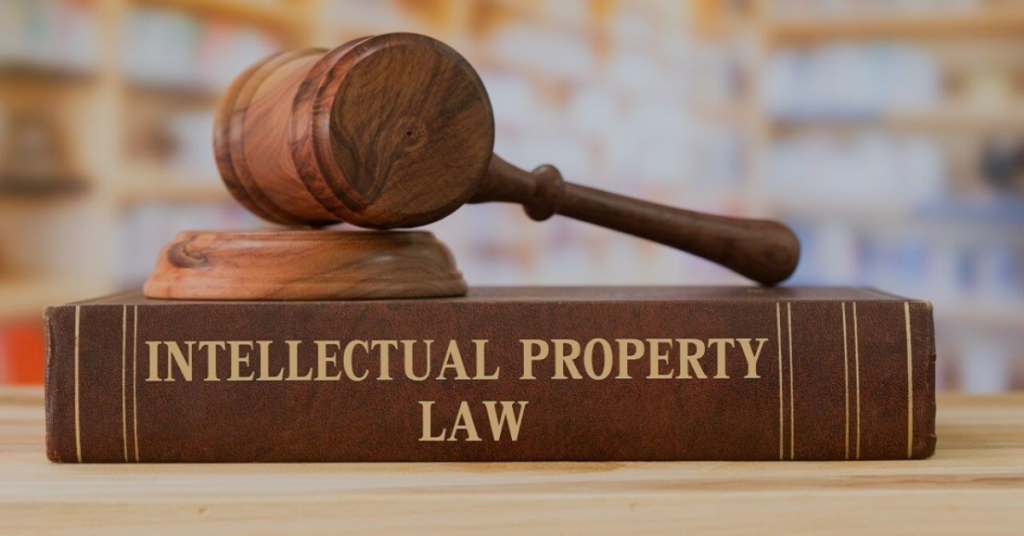Understanding Income Tax in India: A Comprehensive Guide
Income tax is a pivotal element of India's financial ecosystem, contributing significantly to the nation's revenue. It’s a direct tax levied by the Government of India on the income earned by individuals, Hindu Undivided Families (HUFs), companies, firms, and other entities. Understanding the intricacies of income tax is crucial for every Indian citizen to ensure compliance and efficient tax planning. This guide delves into the fundamental aspects of income tax in India, drawing upon relevant legal provisions and principles.
What is Income Tax?
Income tax, as defined under the Income Tax Act, 1961, is a tax levied on the total income of a person during a financial year. The financial year in India runs from April 1st to March 31st. The tax is calculated based on the income earned from various sources, subject to permissible deductions and exemptions as stipulated in the Act. The primary objective of income tax is to raise revenue for the government, which is then used for funding public services, infrastructure development, and various welfare programs.
Key Components of Income Tax Law in India
The framework of income tax law in India is primarily governed by the following:
-
The Income Tax Act, 1961: This is the principal legislation that lays down the framework for income tax in India. It defines taxable income, outlines the rules for calculating tax liability, specifies deductions and exemptions, and establishes the administrative machinery for tax collection and assessment.
-
The Income Tax Rules, 1962: These rules provide detailed procedures and guidelines for implementing the provisions of the Income Tax Act. They clarify various aspects of tax assessment, collection, refund, and appeals.
-
Finance Act: Every year, the Finance Act is passed by the Parliament along with the Union Budget. This Act amends the Income Tax Act, specifies the tax rates for the relevant assessment year, and introduces any new provisions or changes to the existing tax laws.
-
Circulars and Notifications: The Central Board of Direct Taxes (CBDT), the apex body for direct taxes in India, issues circulars and notifications to clarify ambiguities in the Income Tax Act and to provide guidance to taxpayers and tax officials. These interpretations are legally binding on the tax authorities.
-
Case Laws: Judgments by the Supreme Court and various High Courts on income tax matters constitute an important source of law. These judgments provide interpretations of the Income Tax Act and set precedents that are binding on lower courts and tax authorities.
Chargeability of Income Tax: Section 4
Section 4 of the Income Tax Act, 1961 is the charging section. It mandates that income tax shall be charged for each assessment year in respect of the total income of the previous year of every person. "Person" is defined in Section 2(31) of the Act and includes:
- An individual
- A Hindu Undivided Family (HUF)
- A company
- A firm
- An association of persons (AOP) or a body of individuals (BOI), whether incorporated or not
- A local authority
- Every artificial juridical person, not falling within any of the preceding categories
The "previous year" is the financial year immediately preceding the assessment year. The "assessment year" is the period of 12 months commencing on the 1st day of April every year.
Heads of Income
Income is classified under five distinct heads for tax purposes, as per the Income Tax Act, 1961:
-
Income from Salaries: This includes any salary, wages, pension, gratuity, fees, commissions, perquisites, or profits in lieu of salary received by an employee from an employer. Section 17 defines salary for income tax purposes.
-
Income from House Property: This refers to the annual value of any property consisting of buildings or lands appurtenant thereto, of which the assessee is the owner, other than such portions as he may occupy for the purposes of his own business or profession. Section 22 to 27 deal with income from house property.
-
Profits and Gains of Business or Profession: This includes the profits earned from carrying on any business or profession. Deductions are allowed for expenses incurred wholly and exclusively for the purpose of such business or profession. Sections 28 to 44D lay out the provisions for computing income under this head.
-
Capital Gains: This refers to the profits or gains arising from the transfer of a capital asset. A capital asset includes property of any kind held by an assessee, whether or not connected with his business or profession, but excludes certain items like stock-in-trade and personal effects. Sections 45 to 55A deal with capital gains.
-
Income from Other Sources: This is a residual head that includes income that does not fall under any of the other four heads. Examples include interest income, dividend income, income from winnings of lotteries, and gifts. Sections 56 to 59 cover this head.
Deductions from Gross Total Income
The Income Tax Act provides for various deductions from the gross total income (the sum of income under all five heads). These deductions are aimed at encouraging savings, investment, and certain types of expenditure. Key deductions include:
-
Chapter VI-A Deductions (Section 80C to 80U): This is a broad category covering deductions for investments in specified instruments like life insurance policies, Public Provident Fund (PPF), National Savings Certificates (NSC), and certain other eligible investments and payments. Section 80C is one of the most commonly used sections. The aggregate amount of deductions under sections 80C, 80CCC and 80CCD(1) cannot exceed ₹ 1,50,000.
-
Section 80D: Deduction for medical insurance premium paid.
-
Section 80G: Deduction for donations to charitable institutions.
-
Section 80TTA/80TTB: Deduction for interest income from savings accounts (80TTA for individuals below 60 years and 80TTB for senior citizens).
-
Section 80E: Deduction for interest paid on education loan.
The specific conditions and limits for each deduction are detailed in the respective sections of the Income Tax Act.
Tax Rates and Slabs
Income tax rates are determined by the Finance Act passed each year. India follows a slab system, where different tax rates apply to different income brackets. The tax rates vary based on the residential status and age of the individual. There are generally different tax slabs for:
- Individuals below 60 years of age.
- Senior Citizens (60 years or more but less than 80 years).
- Super Senior Citizens (80 years or more).
In addition to the basic tax rates, a surcharge is levied on individuals with high incomes. A Health and Education Cess is also added to the income tax and surcharge amount.
The Finance Act, 2020 introduced an optional alternative tax regime under Section 115BAC of the Income Tax Act, 1961. This regime offers lower tax rates but requires foregoing certain deductions and exemptions. Taxpayers can choose to opt for either the existing tax regime or the new tax regime based on their individual circumstances.
Assessment Procedures
The Income Tax Act prescribes various assessment procedures for determining the tax liability of an assessee. These include:
-
Self-Assessment (Section 140A): The assessee calculates their income and tax liability and pays the tax before filing the income tax return.
-
Summary Assessment (Section 143(1)): This is an initial assessment done by the Income Tax Department based on the information provided in the income tax return. Discrepancies, if any, are intimated to the assessee.
-
Scrutiny Assessment (Section 143(3)): The Assessing Officer (AO) selects certain cases for detailed scrutiny to verify the correctness and completeness of the income tax return. The AO may call for additional information and documents from the assessee.
-
Best Judgment Assessment (Section 144): If the assessee fails to comply with the requirements of the Income Tax Act, the AO may make an assessment to the best of their judgment based on available information.
-
Reassessment (Section 147): If the AO has reason to believe that income chargeable to tax has escaped assessment, they can initiate reassessment proceedings.
Filing Income Tax Returns
Filing income tax returns is a mandatory requirement for individuals and entities whose income exceeds the basic exemption limit. The due dates for filing income tax returns are specified under the Income Tax Act. The deadlines typically fall on July 31st for individuals and October 31st for companies and other entities requiring audit.
Income tax returns can be filed electronically through the e-filing portal of the Income Tax Department (www.incometax.gov.in). The e-filing portal provides various forms and utilities to assist taxpayers in filing their returns.
Failure to file income tax returns within the prescribed due date can attract penalties and interest under the Income Tax Act. Section 234F prescribes a late filing fee for belated income tax returns. Interest under section 234A is levied for delay in filing the return.
Advance Tax
Advance tax is payable in installments during the financial year by taxpayers whose estimated tax liability exceeds ₹10,000. This applies primarily to self-employed professionals and businesses. Salaried individuals whose tax liability is not fully covered by Tax Deducted at Source (TDS) are also required to pay advance tax. Sections 207 to 219 deal with advance tax.
Advance tax is payable in installments as per the prescribed schedule. Failure to pay advance tax or delay in paying advance tax can attract interest under sections 234B and 234C of the Income Tax Act.
Tax Deduction at Source (TDS)
Tax Deduction at Source (TDS) is a mechanism where tax is deducted at the source of income. The payer of the income (e.g., employer, bank, contractor) is required to deduct tax at the prescribed rate and deposit it with the government. The deductee (the person receiving the income) gets credit for the TDS amount while filing their income tax return. Sections 192 to 196D deal with TDS provisions.
TDS provisions apply to various types of income, including salary, interest, commission, rent, and professional fees. The rates of TDS vary depending on the nature of the income and the payee.
Tax Planning
Effective tax planning is essential for minimizing tax liability within the legal framework. It involves understanding the various deductions and exemptions available under the Income Tax Act and making informed decisions regarding investments and expenditures. Tax planning should be an integral part of financial planning and should be done throughout the year, rather than as an afterthought at the end of the financial year.
Appeals and Grievances
The Income Tax Act provides a mechanism for taxpayers to appeal against assessment orders and decisions of the tax authorities. The appellate hierarchy includes:
- Commissioner of Income Tax (Appeals) [CIT(A)]
- Income Tax Appellate Tribunal (ITAT)
- High Court
- Supreme Court
Taxpayers can file appeals within the prescribed time limits and follow the prescribed procedures.
Conclusion
Understanding the nuances of income tax law is vital for every Indian citizen. This guide provides a foundational understanding of the key aspects of income tax in India, including its legal basis, components, assessment procedures, and compliance requirements. While this guide offers a comprehensive overview, it is advisable to consult with a qualified tax professional for personalized advice and assistance with complex tax matters. Staying informed about the latest changes in tax laws and regulations is crucial for ensuring compliance and effective tax planning.




